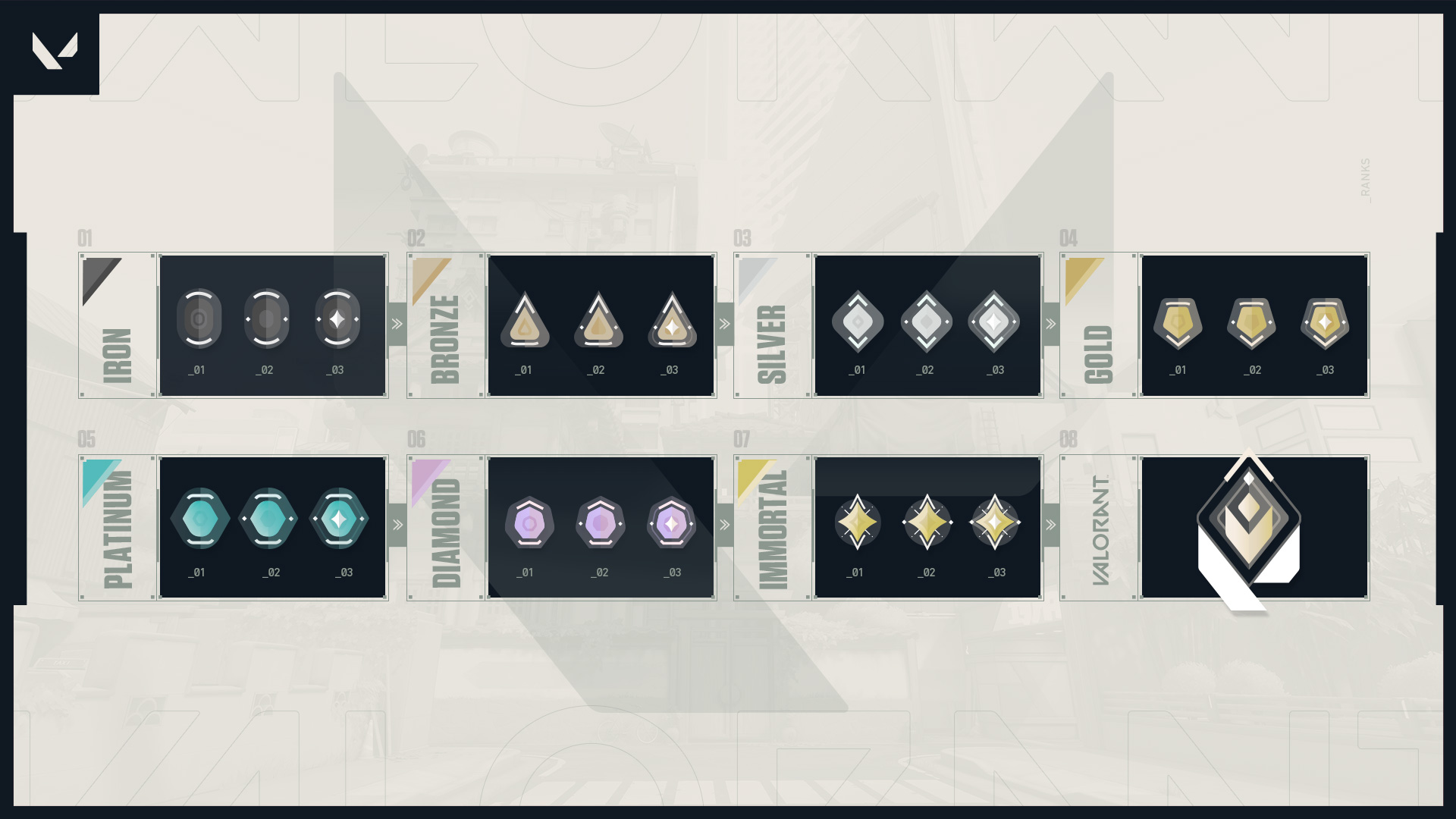Hey VALORANT competitors. My name is Ian “Brighteyz” Fielding, and I’m writing as part of the Competitive team today to guide you through VALORANT’s Competitive mode, show you how it all works, and share some of the ‘why’ behind our team’s decisions. Competitive mode will be available soon after patch 0.49, starting with EU and NA.
VALORANT’s Competitive mode uses the same in-game rules and format as the Unrated mode, but with a focus on higher-stakes competition. VALORANT's competitive system is still in its early stages, and we plan to evolve it over time, but we have a core experience we wanted to share with you all in closed beta so that we can build and evolve the mode together. While we plan to keep Unrated mode always available, Competitive matchmaking may be disabled for short periods throughout the closed beta as we work to refine the mode and incorporate your feedback.
Our system aims to solve some of the common pain points we've seen players experience with competitive modes and ranked systems. We're taking your personal skill into account so we can recognize when you're crushing it, combat smurfing, reduce players with ‘boosted’ ranks, and ensure that for most of your matches, you and your teammates are placed into a fair fight.
Alright! Here’s a bite-size summary, with more details below.
- Complete 20 Unrated matches to unlock Competitive mode
- 8 ranks, 3 tiers each, except the top rank, VALORANT
- Queue with up to 5-player parties, must be within 2 ranks
- Rank isn’t displayed if competitive matches aren’t played within 14 days, but your rank doesn’t decay behind the scenes.
- Closed beta rank does not carry over to launch
Enter the ranks

The option to enter Competitive matchmaking will open once you’ve completed 20 Unrated matches. Consider this a necessary warmup before the sweat starts.
There are eight levels of rank, each divided into three tiers: Iron, Bronze, Silver, Gold, Platinum, Diamond, Immortal, and our highest rank — VALORANT. Winning games is the most important factor in gaining rank, but if you perform exceptionally well, your rank can go up faster. Inversely, losing games and performing well below expectations (deduced from your previous matches) will reduce your rank.
Your personal performance will have a greater impact on the early evaluation of your skill, but will decrease in importance when compared to wins, as we hone in on your skill over time. Competitive mode also measures how decisively you win or lose. We figure, if there is a benefit to your rank that comes from playing your best for the entire match, it will incentivize you to stay in the fight and not throw games.
For those at the VALORANT rank level, winning and how decisive games are won or lost will be the only factor we measure, because at the highest levels of competitive play, we trust you and your teammates have earned your way there.
Competitive integrity
Our rank and competitive matchmaking system is meant to deliver a balanced fight and keep the disruption to a minimum.
Factoring in your total performance also helps us better detect smurfs, prevent rank boosting, and get to an accurate display of your skill (rank) much quicker. This way you’ll have more trust that you're playing in balanced matches with players that have actually earned their ranks.
Planting the Spike can be more fun with friends, so you can queue into competitive matchmaking with a party of up to 5 people. We want players to feel supported when playing in a team of up to 5, because we see it as a key part of competitive play in VALORANT. But whoever you party with must be within 2 ranks (6 tiers) from you. This requirement is to help ensure that there isn’t a huge skill disparity in games where one player is clearly above or below the average skill of other players in the match.
We’ve also taken steps to ensure that you’re on a level playing field regardless of your queue size. Our competitive matchmaking takes into account your pre-made party size, and automatically optimizes your match to favor similar premade sizes on the opposing team.
Rank inactivity will also be tracked. If you haven't played a competitive match in 14 days, then your account will be considered “inactive” and your rank will be hidden. Don’t worry, your rank will be displayed again after your first match back. We want to be confident that when others see your rank, it's an accurate reflection of your skill. After 14 inactive days, we don’t have as high of confidence in displaying your rank. However, we won’t decay your rank artificially in the background, so don’t sweat it if you're one of those players that is always on top of their game.
Competitive progression, and beyond
The VALORANT community will lead the way on how our team evolves competitive mode and the rank systems during closed beta and especially after launch. We’re currently tinkering with how to add an element of persistent rank progression that recognizes your competitive accomplishments for all ranks outside of just the match rank display.
Expect to hear more on this and other improvements on VALORANT’s competitive mode and rank as we get closer to launch.